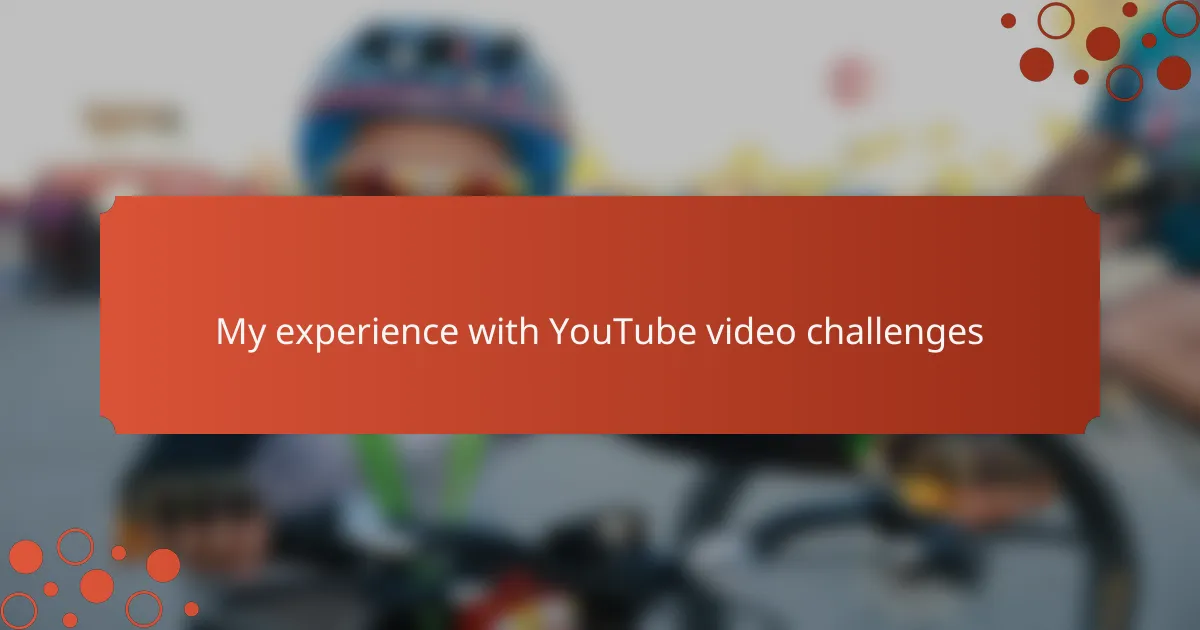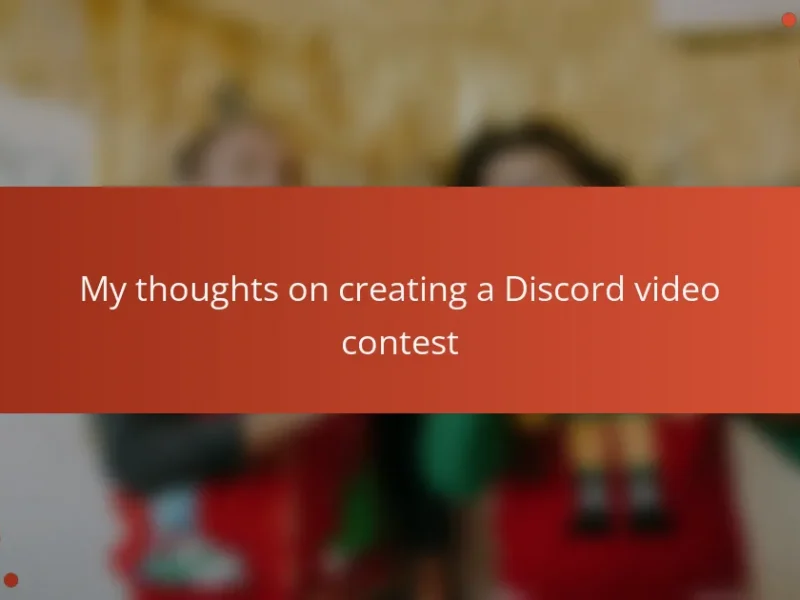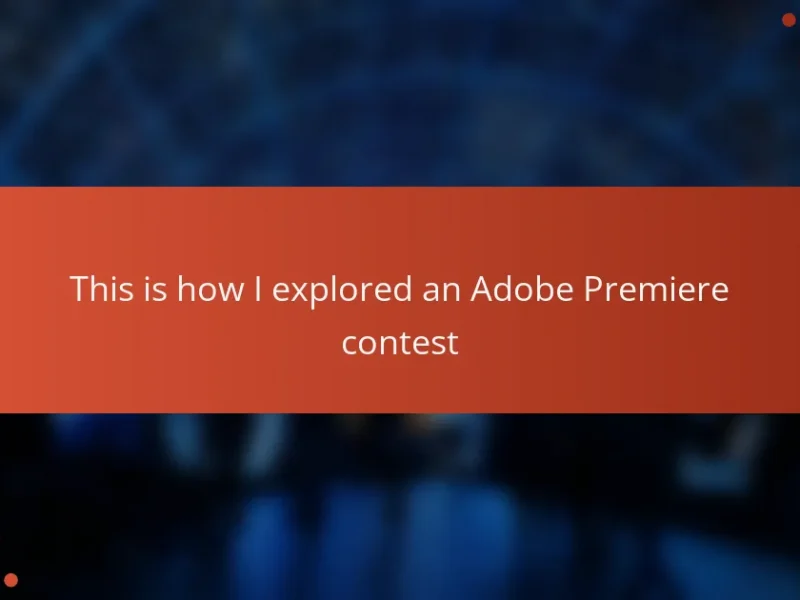Key takeaways
- YouTube video challenges foster creativity and connection, offering opportunities for skill testing and community engagement.
- Preparation, including planning narratives and gathering materials, enhances confidence and reduces stress during filming.
- Embracing imperfection and engaging with the community can create more relatable content and foster support among creators.
- Pacing the creative process prevents burnout and allows for a more enjoyable and fulfilling content creation experience.
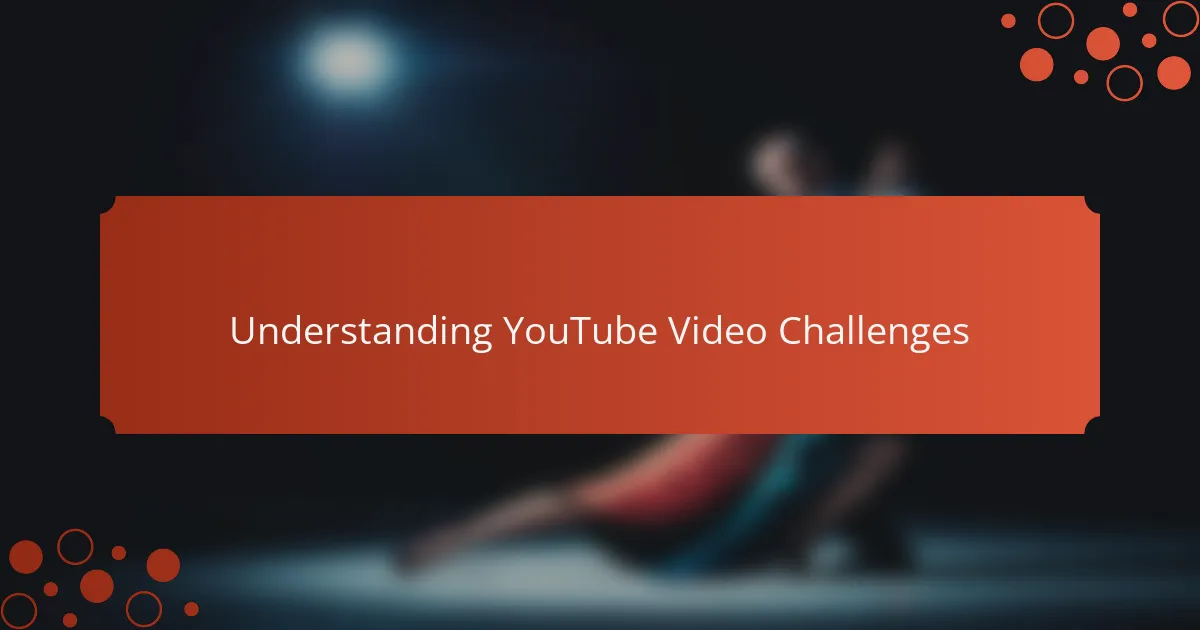
Understanding YouTube Video Challenges
YouTube video challenges are more than just trendy activities; they’re a form of creative expression that invites participation and connection. When I first encountered these challenges, I was struck by how they blend fun with a subtle test of skill or endurance—you can’t help but wonder, “Could I pull this off?” This mix of excitement and challenge is what hooks so many creators and viewers alike.
From my experience, each challenge comes with its own unique vibe and community. Some feel lighthearted and silly, sparking laughter and playful competition, while others push you out of your comfort zone, almost demanding resilience and determination. Have you ever found yourself hesitating before taking up a challenge, only to realize afterward that the thrill was worth every nervous second?
What I find fascinating is how these challenges evolve and spread, fueled by users’ creativity and the desire to connect through shared experiences. There’s something powerful about joining a worldwide conversation through a simple video format. It’s like being part of a digital campfire where stories, fails, and triumphs are exchanged in real time.
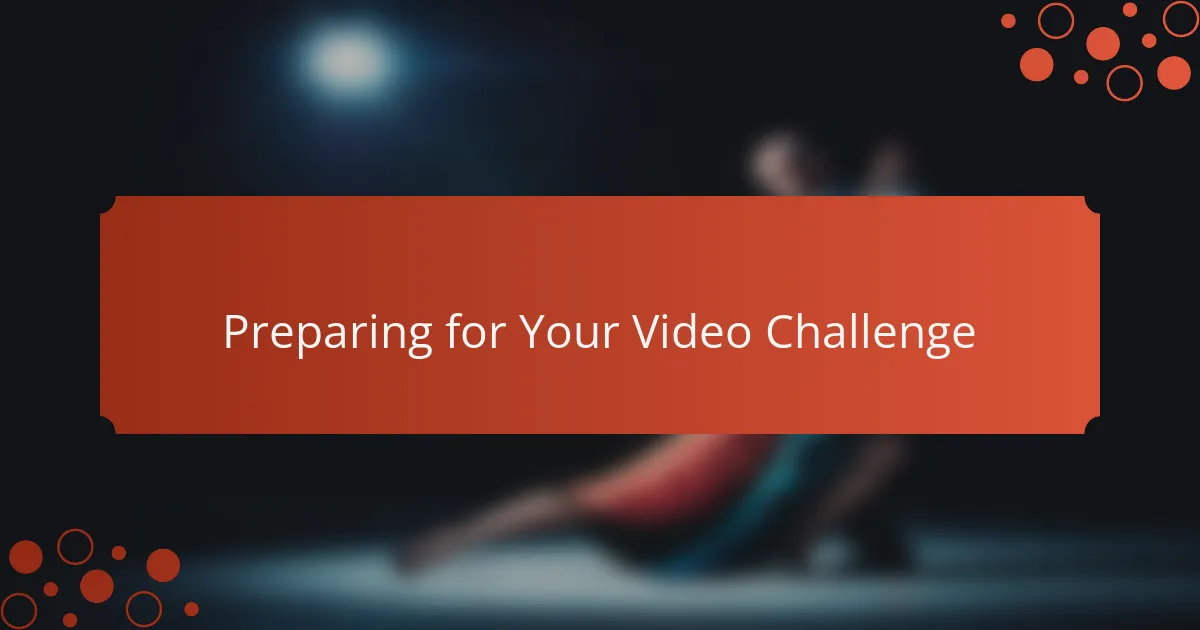
Preparing for Your Video Challenge
Preparing for a YouTube video challenge takes more than just enthusiasm—it requires a bit of planning. I remember gearing up for my first challenge by watching others’ videos closely, noting what worked and what didn’t. This helped me feel more confident rather than jumping in blindly.
I also like to think about the story I want to tell through my video. What’s going to make my take on the challenge unique? For me, imagining that narrative keeps the nervous energy in check and fuels my creativity. Have you ever tried to picture how your audience will react before you even hit record? It can make a big difference.
Lastly, gathering the right materials or props beforehand is a small step, but it saved me from scrambling mid-shoot more times than I care to admit. Preparing your space and minimizing distractions makes the whole process smoother and, frankly, less stressful. Trust me, a little prep work goes a long way when you’re in front of the camera.
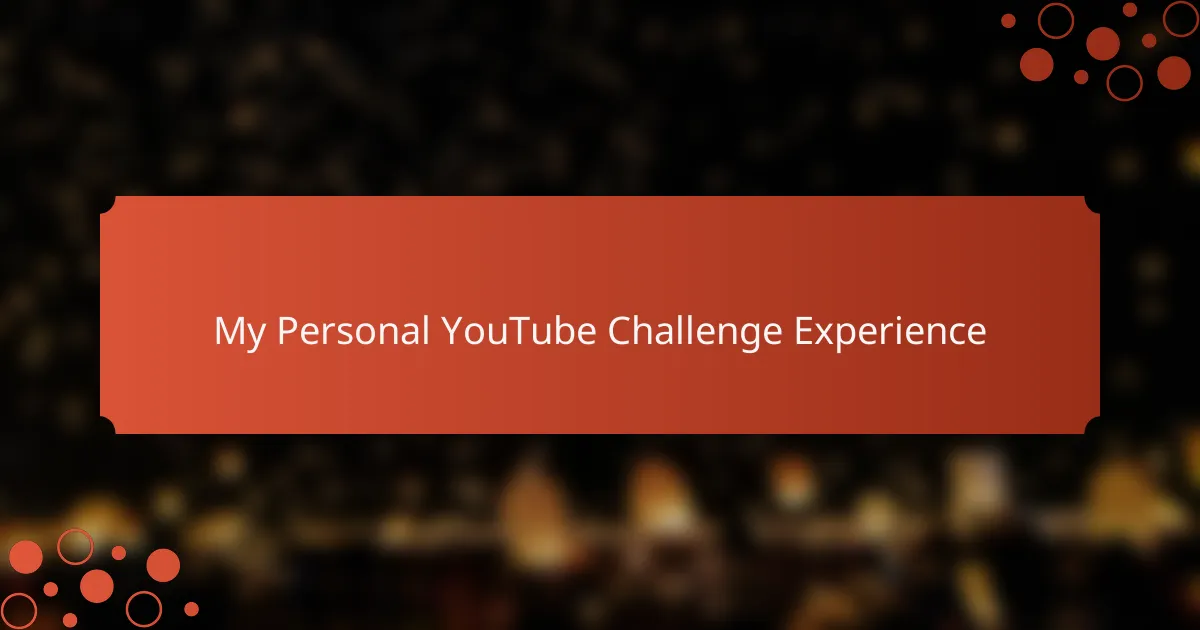
My Personal YouTube Challenge Experience
When I first posted my own challenge video, I was nervous beyond belief. There’s something vulnerable about putting yourself out there, unsure whether viewers will laugh with you, at you, or simply scroll past. But honestly, that moment of hesitation transformed into exhilaration when I started seeing comments from people who tried it themselves or shared their own takes.
One challenge pushed me to step outside my comfort zone in a surprising way—I had to balance humor with authenticity while performing tasks I’d never done before. Did I nail it on the first try? Absolutely not. But each stumble felt like a small victory, teaching me patience and resilience in front of the camera. Looking back, those awkward moments made the final video all the more genuine.
What I love most about these challenges is the unexpected friendships and conversations they spark. I’ve connected with strangers who shared tips, cheered me on, or even challenged me back. Have you ever experienced how a simple video can turn into a supportive community? For me, that sense of belonging has been the real prize beyond any likes or views.
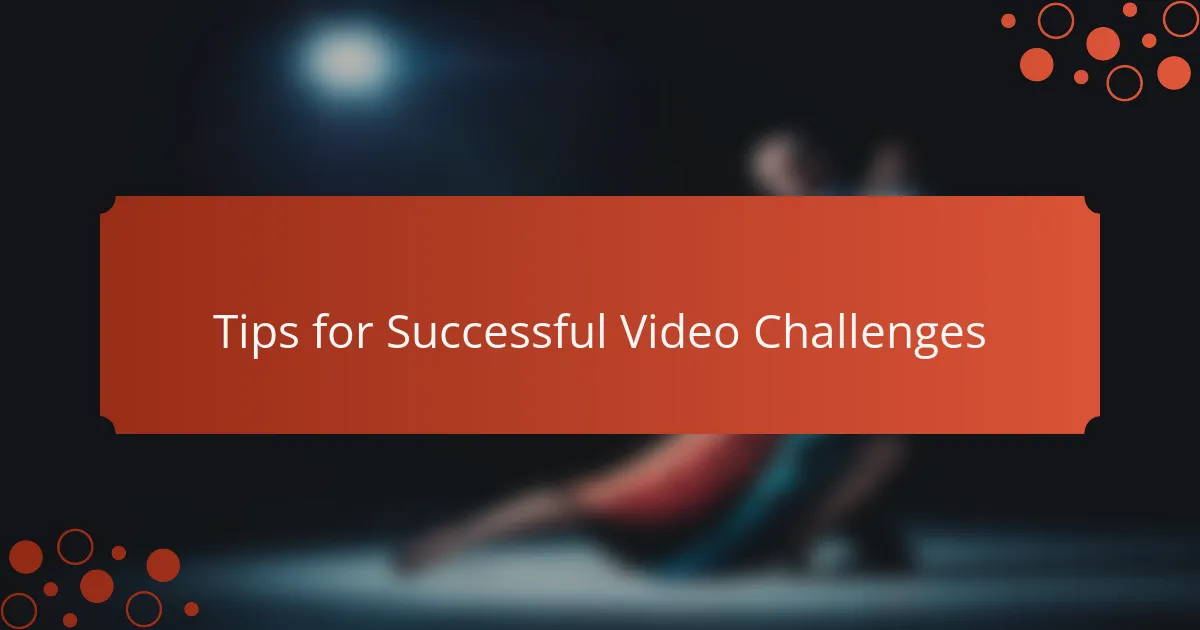
Tips for Successful Video Challenges
One tip I can’t stress enough is to embrace imperfection. When I first started, I worried my videos would look too polished or rehearsed, but viewers actually connect more when they see genuine effort and occasional slip-ups. Have you ever noticed how a small mistake can make a video feel more relatable and human?
Another strategy that helped me was engaging with the community around the challenge. Responding to comments and watching other creators’ versions gave me fresh ideas and motivation. It’s amazing how sharing feedback can turn a solo challenge into a collaborative experience.
Finally, I found that pacing myself made a huge difference. Rushing through a challenge often led to frustration or burnout, so I made sure to give myself breaks and enjoy the process. Why sprint when you can savor the journey? Taking it slow allowed me to experiment and ultimately create content I was proud of.
